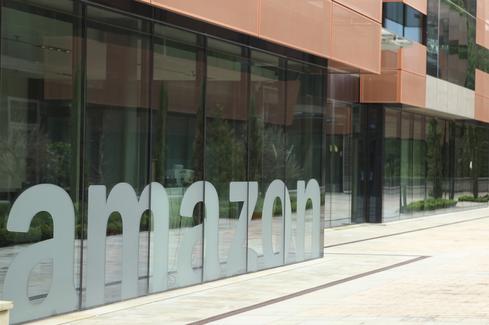Is Amazon Testing Its Own Package Delivery Airline?
Reports suggest Amazon is conducting a pilot experiment in air freight delivery at an Ohio airport due to dissatisfaction with UPS and FedEx deliveries.


Drones: 10 Novel Uses For Your City
Drones: 10 Novel Uses For Your City (Click image for larger view and slideshow.)
Amazon, the online retail giant, may be ready to show just how far its reach extends in the age of digital shopping. It's reported to be negotiating to take over a major share of an air facility in Wilmington, Ohio.
If it does, it's likely to launch a fleet of air freight carriers that will rival UPS and FedEx.
Its airborne freight ambitions could reportedly make it the largest overnight package mover within two years. It could do that by tapping its already huge customer base ordering online products, and by plugging package-filled flights into its extensive distribution network.
By applying its existing order and delivery systems to air freight, the traffic generated could give Amazon's air freight branch 1% of the overnight package market soon after it takes off, resulting in $5 billion added to its bottom line, according to reports from Ohio newspapers and the investor website SeekingAlpha.com.
The Cincinnati Enquirer reported in mid-2014 that Ohio Gov. John Kasich showed up in Wilmington to help open a new $14.6 million hanger, an investment meant to attract a major client back to Wilmington. DHL had used the freight airport for several years before its flagging business forced it to withdraw, taking away 7,500 jobs from the community. DHL moved to the Cincinnati/Northern Kentucky International Airport in 2008, then ceased operation in the United States.
Persistent rumors about the airport say Amazon is interested in the DHL infrastructure left behind.
Redevelopment around Amazon's priorities is a possibility because DHL donated its 1,500 acres of the Wilmington Air Park to the Clinton County Port Authority in 2010, which has been seeking a large client for the site ever since, according to the Dayton Daily News.
On Nov. 23, Motherboard, an online publication of fiction and journalism, published a piece saying an operation at the air park called "Aerosmith" was actually an Amazon pilot project to institute its own fleet of freight airplanes.
Aerosmith has contracted for two Boeing 767s from the airline ABX and two more from Air Transport International, according to a Motherboard interview with Paul Cunningham, a spokesman for Air Transport Services Group, an aviation holding company in Ohio. ATSG is running the airport operation for Aerosmith, including an extensive package conveyor belt system and sorting operation for packaged goods. ATSG has been providing the services to Aerosmith since September.
Aerosmith mounts four flights a day to Allentown, Penn., Ontario, Calif., Tampa, Fla., and Oakland, Calif., Motherboard reported. Amazon has distribution centers about 20 miles from Allentown and Ontario and about 60 miles from Tampa and Oakland.
Amazon is reported to be dissatisfied with both UPS and FedEx as the two struggle to keep up with the surge in online ordering during the holiday season.
The Wall Street Journal quoted ShipMatrix on Dec. 10 as saying that FedEx was making 95% of its deliveries on schedule and UPS, 91%, as of Dec. 4, early in the holiday surge. That would put Amazon on track to see millions of its shipments not reach their destinations on time again this year because of its heavy reliance on the two overnight delivery companies. When the two are combined with the US Postal Service, the three package shippers are handling a total of 1.5 billion packages between Thanksgiving and New Year's Day.
In 2013, Amazon delivered 608 million packages. If it had a 91% on-time rate that year, that would have meant 55 million packages arrived late. Even with higher on-time deliveries, there are still millions of deliveries at stake, and failure to deliver by the promised time results in customer service headaches for Amazon.
In addition to the 767s flying in and out of Ohio, Amazon has been using a Boeing 737 to fly packages between Boeing ield near Seattle and West Coast destinations, SeekingAlpha reported Dec. 22. The 737 is considered by aviation experts as one of the most efficient short-route planes available.
[Want to learn about another Amazon investment in Ohio? See Amazon Bolsters Green Power Investment With Ohio Wind Farm.]
Amazon may be considering establishing its own package-moving fleet through these experiments. If it does, it could quickly prove a formidable competitor in the package-moving market, given its automated systems and ability to pursue efficiencies through expanding sales volumes.
SeekingAlpha claimed that UPS and FedEx have been "slow to adopt cutting-edge technology." FedEx uses its aircraft an average 3.3 hours a day. In 2015, the company is flying them at 55.7% of cargo capacity, "something that would be considered horrendous in the overall airline industry," according to the report.
If Amazon sought to disrupt the package market the way it has disrupted retail, it could once again drive down prices and undercut the major package-delivery companies, it said.
Elite 100 2016: DEADLINE EXTENDED TO JAN. 15, 2016 There's still time to be a part of the prestigious InformationWeek Elite 100! Submit your company's application by Jan. 15, 2016. You'll find instructions and a submission form here: InformationWeek's Elite 100 2016.
About the Author(s)
You May Also Like







